Menu
Math Lesson 11.3.1 - The Synthetic Division Method of Polynomials
Please provide a rating, it takes seconds and helps us to keep this resource free for all to use
Welcome to our Math lesson on The Synthetic Division Method of Polynomials, this is the first lesson of our suite of math lessons covering the topic of Solutions for Polynomial Equations, you can find links to the other lessons within this tutorial and access additional Math learning resources below this lesson.
The Synthetic Division Method of Polynomials
The synthetic division method is a method used to divide polynomials in a much simpler way compared to the long division method explained in tutorial 11.2. The condition to perform a synthetic division is to have a linear polynomial as a divisor, i.e. the divisor Q(x) of the polynomial P(x) must have the form mx ± n, where m is a coefficient and n a constant.
As stated in the previous tutorial, we may write the division of two polynomials as
where S(x) is the quotient polynomial and R(x) is the remainder polynomial.
For example, if P(x) = x2 + 4x + 7, we can write it as
= (x2 + 4x + 3) + 4
= (x + 1)(x + 3) + 4
Taking Q(x) = x + 1 yields
= (x + 1)(x + 3)/x + 1 + 4/x + 1
= x + 3 + 4/x + 1
where
S(x) = x + 3 and R(x) = 4/(x + 1)
The procedure to perform the synthetic division is as follows:
Step 1: Write down the coefficients and the constant of the original polynomial P(x) at the place where we write the dividend when using the long division method. In addition, we write the zero of the divisor Q(x) in the place where we put the divisor in the long division method. In our example, we have P(x) = x2 + 4x + 7 and Q(x) = x + 1. Thus, we write 1, 4 and 7 in the upper part of the scheme and -1 aside (because if x + 1 = 0 then x = -1).
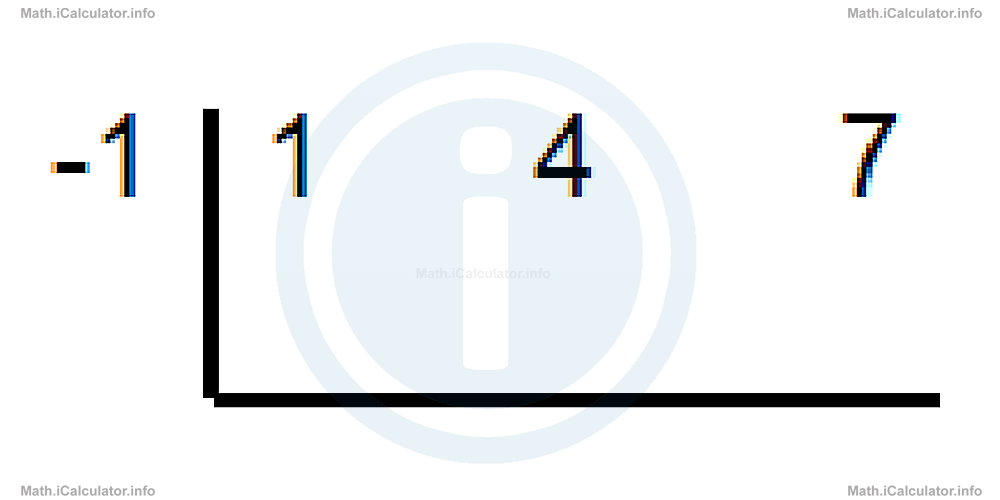
Step 2: Bring the leading coefficient of the original polynomial to the bottom row.
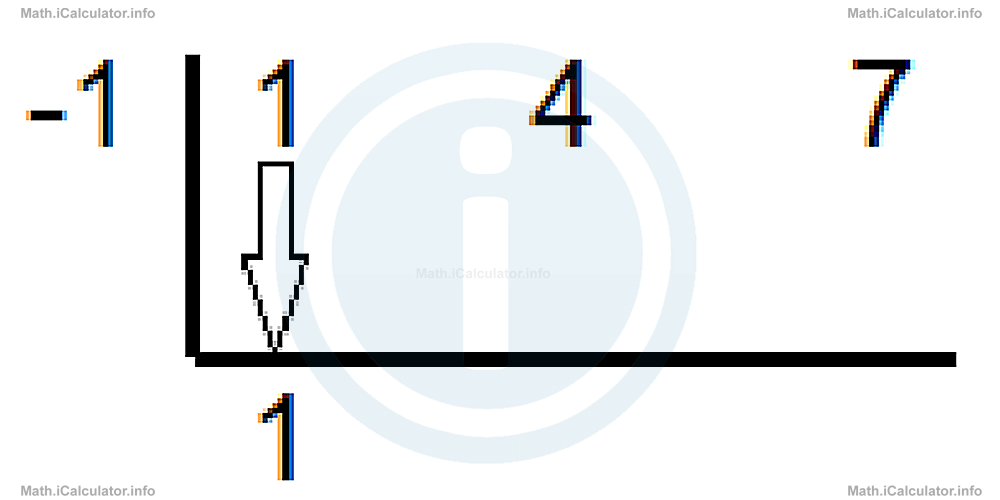
Step 3: Multiply the leading coefficient of the polynomial with the zero of the divisor and write down the result in the middle row below the second coefficient.
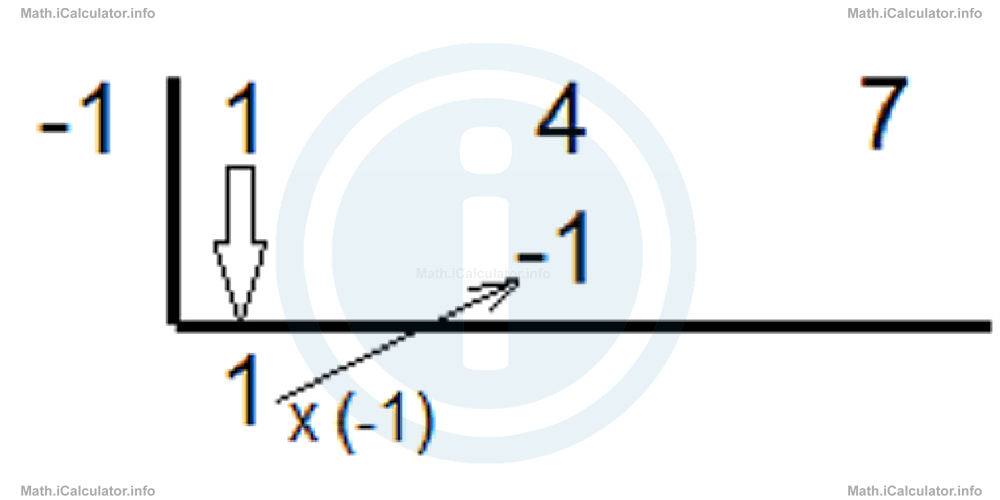
Step 4: Add the numbers in the second column and write down the result in the bottom row, next to the leading coefficient.
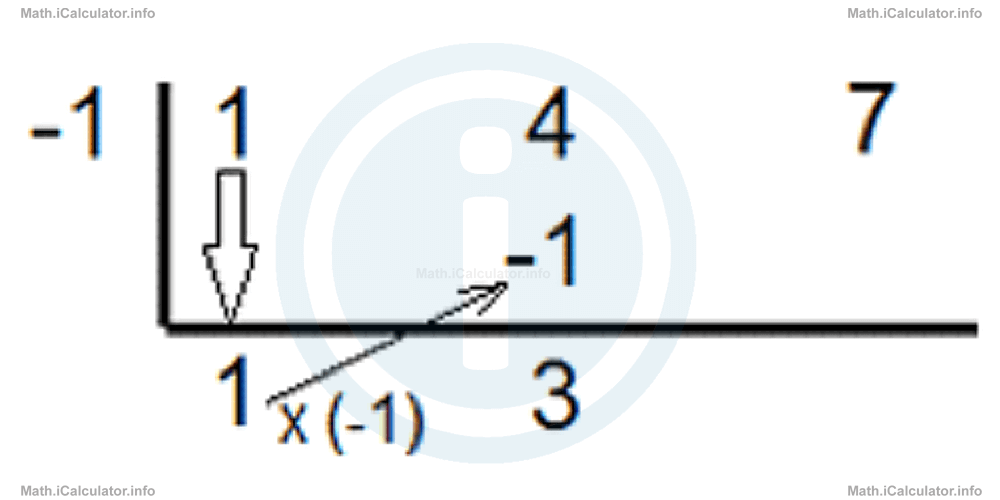
Step 5: Repeat the procedure explained in step 3 but this time using the new number.
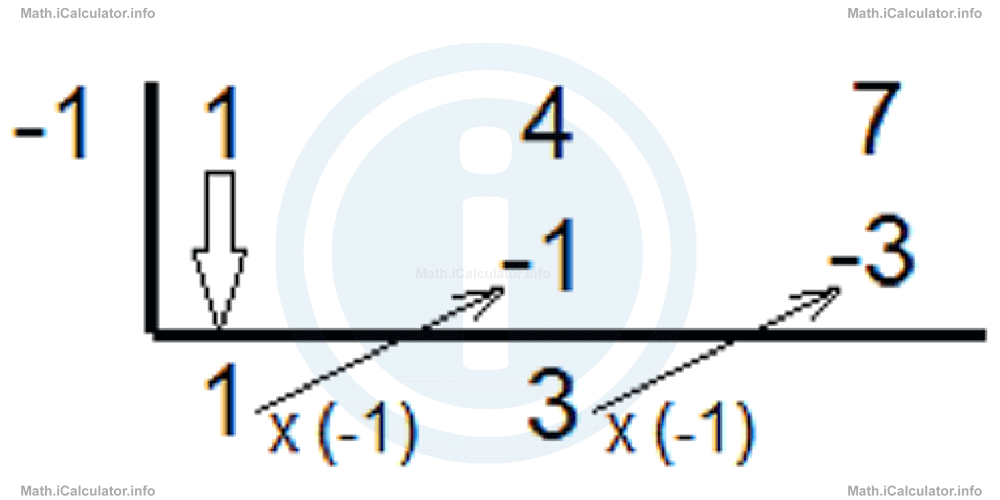
Step 6: Repeat the procedure explained in step 4 but this time using the new number.
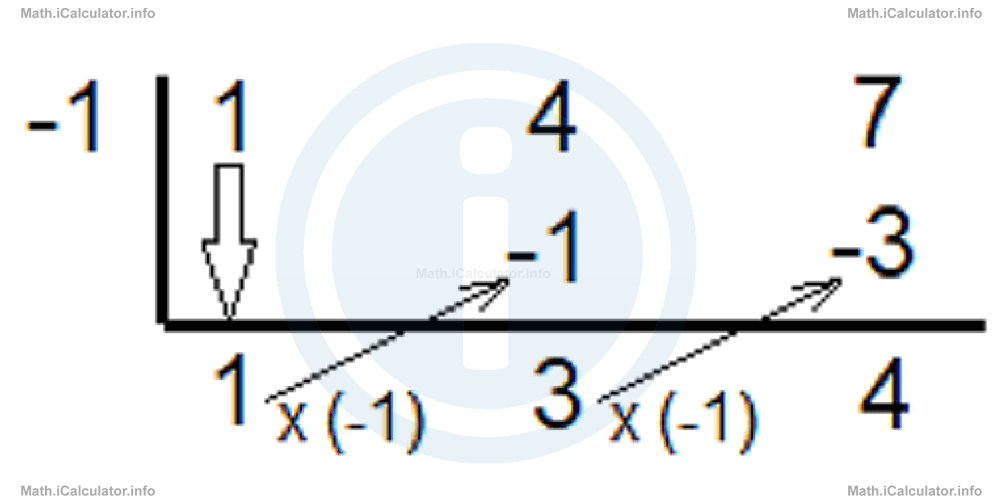
Step 7: Since there are no more operations to do, the last number obtained gives the remainder of the division (here it is 4). Hence, the remainder is R(x) = 4. On the other hand, the number preceding it represents the constant of the quotient (here it is 3) and the number preceding it, the last coefficient of the quotient polynomial and so on. Hence, the quotient is S(x) = x + 3. Finally, since -1 is a zero of the divisor, we have Q(x) = x + 1. Therefore, since the general form of a polynomial factorisation is
then, we have in the specific case
The following figure shows the Synthetic Division Method of Polynomials represented schematically.
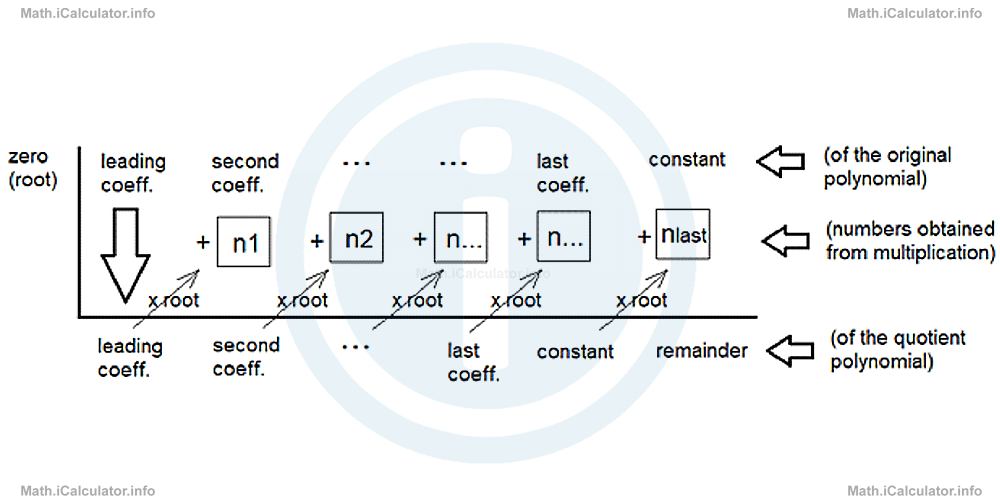
Example 1
Divide the polynomials below using the Synthetic Division Method and write the result as a product of factors including the remainder (if exists).
- P(x) = 2x3 - 3x2 - x + 1 and Q(x) = 2x - 1
- P(x) = 4x3 - 2x2 - 5x + 3 and Q(x) = 3x - 3
Solution 1
- The coefficients of the dividend P(x) are 2, -3, -1 and 1, where 2 is the leading coefficient. On the other hand, the zero of the divisor Q(x) is calculated as 2x - 1 = 0Hence, using the Synthetic Division Method yields
2x = 1
x = 1/2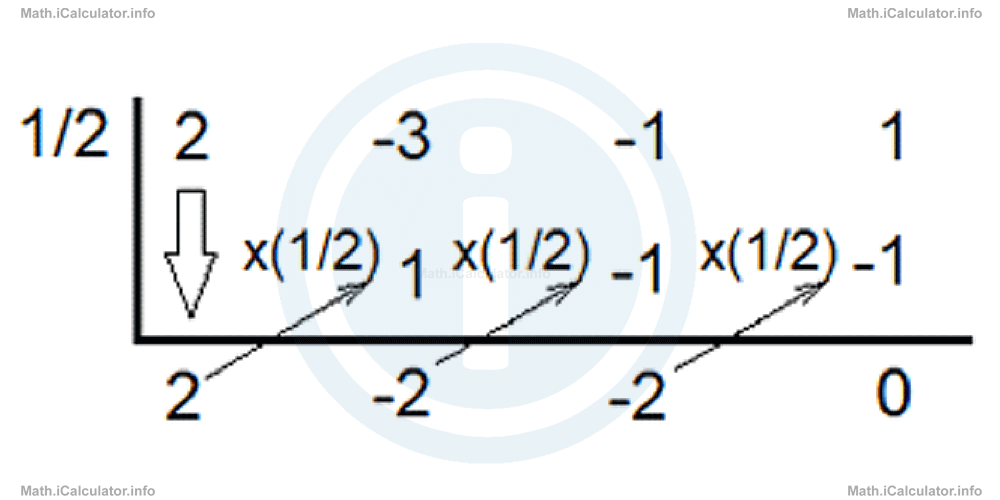 The last number at the bottom row gives the remainder, which here is 0. The numbers in the middle row represent the coefficients of the quotient polynomial from the highest to the lowest. They are 1, -1 and -1, which means the coefficient preceding x2 is 1, the coefficient preceding x is -1 and the constant of the quotient polynomial is -1. Hence, we have P(x)/Q(x) = 2x3 - 3x2 - x + 1/2x - 1
The last number at the bottom row gives the remainder, which here is 0. The numbers in the middle row represent the coefficients of the quotient polynomial from the highest to the lowest. They are 1, -1 and -1, which means the coefficient preceding x2 is 1, the coefficient preceding x is -1 and the constant of the quotient polynomial is -1. Hence, we have P(x)/Q(x) = 2x3 - 3x2 - x + 1/2x - 1
= 1/2 (2x2 - 2x - 2) + 0/2x - 1
= x2 - x - 1 - The coefficients of the dividend P(x) are 4, -2, -5 and 3, where 4 is the leading coefficient. On the other hand, the zero of the divisor Q(x) is calculated as 3x - 3 = 0Hence, using the Synthetic Division Method yields
3x = 3
x = 1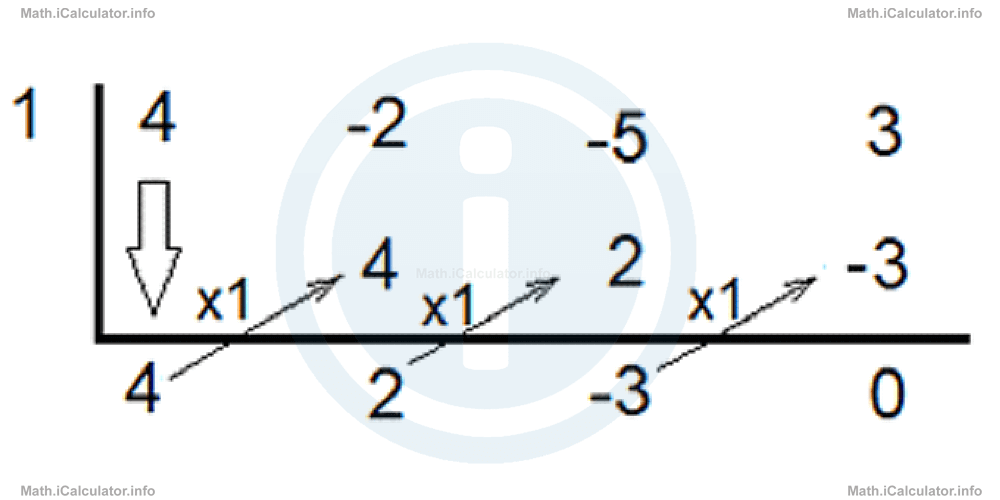 The coefficients of the quotient Q(x) therefore are 4 and 2 and the constant is -3. Moreover, there is no remainder in this division. Hence, we obtain P(x)/Q(x) = 4x3 - 2x2 - 5x + 3/3x - 3(The quotient is divided by 3 because 3x - 3 = 3(x - 1), where 1 was the zero of the quotient polynomial we used in the synthetic division method.)
The coefficients of the quotient Q(x) therefore are 4 and 2 and the constant is -3. Moreover, there is no remainder in this division. Hence, we obtain P(x)/Q(x) = 4x3 - 2x2 - 5x + 3/3x - 3(The quotient is divided by 3 because 3x - 3 = 3(x - 1), where 1 was the zero of the quotient polynomial we used in the synthetic division method.)
= 4x2 + 2x - 3 /3/ + 0/3x - 3
= 4/3 x2 + 2/3 x - 3/3
= 4/3 x2 + 2/3 x - 1
More Solutions for Polynomial Equations Lessons and Learning Resources
Whats next?
Enjoy the "The Synthetic Division Method of Polynomials" math lesson? People who liked the "Solutions for Polynomial Equations lesson found the following resources useful:
- Synthetic Division Method Of Polynomials Feedback. Helps other - Leave a rating for this synthetic division method of polynomials (see below)
- Polynomials Math tutorial: Solutions for Polynomial Equations. Read the Solutions for Polynomial Equations math tutorial and build your math knowledge of Polynomials
- Polynomials Video tutorial: Solutions for Polynomial Equations. Watch or listen to the Solutions for Polynomial Equations video tutorial, a useful way to help you revise when travelling to and from school/college
- Polynomials Revision Notes: Solutions for Polynomial Equations. Print the notes so you can revise the key points covered in the math tutorial for Solutions for Polynomial Equations
- Polynomials Practice Questions: Solutions for Polynomial Equations. Test and improve your knowledge of Solutions for Polynomial Equations with example questins and answers
- Check your calculations for Polynomials questions with our excellent Polynomials calculators which contain full equations and calculations clearly displayed line by line. See the Polynomials Calculators by iCalculator™ below.
- Continuing learning polynomials - read our next math tutorial: Rational Expressions
Help others Learning Math just like you
Please provide a rating, it takes seconds and helps us to keep this resource free for all to use
We hope you found this Math tutorial "Solutions for Polynomial Equations" useful. If you did it would be great if you could spare the time to rate this math tutorial (simply click on the number of stars that match your assessment of this math learning aide) and/or share on social media, this helps us identify popular tutorials and calculators and expand our free learning resources to support our users around the world have free access to expand their knowledge of math and other disciplines.